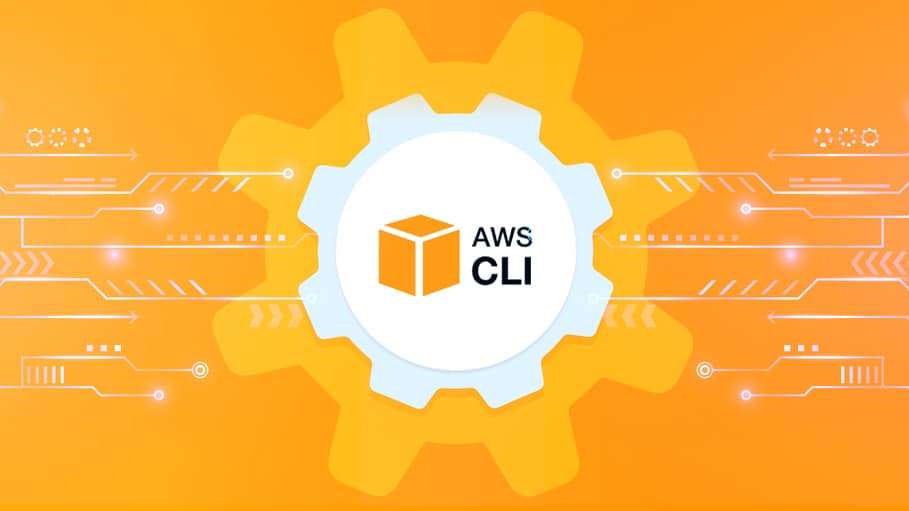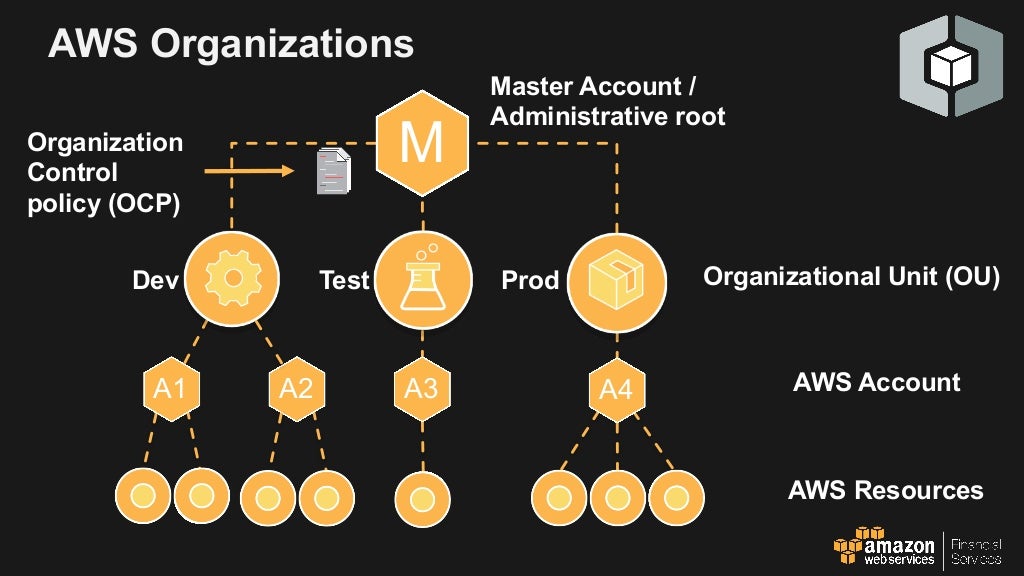Understanding AWS CLI Organizations
AWS CLI Organizations is a service that enables users to manage multiple AWS accounts from a single, centralized location. It simplifies account management, enforces policies, and improves security by providing a hierarchical structure for AWS accounts, consolidated billing, and service control policies. With AWS CLI Organizations, users can create, delete, and manage AWS accounts, as well as apply policies to groups of accounts, making it easier to manage access, permissions, and costs across their AWS environment.
Key Features and Benefits of AWS CLI Organizations
AWS CLI Organizations offers several key features and benefits that make it an attractive option for managing multiple AWS accounts. One of the primary benefits is the ability to create an account hierarchy, which enables users to organize their accounts in a logical and manageable way. This hierarchical structure can be based on business units, environments, or any other criteria that make sense for the organization. Another significant benefit of AWS CLI Organizations is consolidated billing, which allows users to view and manage their AWS costs across all of their accounts in a single place. This feature can help organizations save time and money by providing a clear and concise view of their AWS spending.
Additionally, AWS CLI Organizations offers service control policies (SCPs), which enable users to centrally manage permissions and access across their AWS accounts. SCPs allow users to define and enforce policies at the organization, account, or group level, making it easier to manage access and permissions across their AWS environment.
Overall, AWS CLI Organizations provides a powerful and flexible way to manage multiple AWS accounts, with features and benefits that can help organizations simplify account management, reduce costs, and improve security.
How to Use AWS CLI Organizations: A Step-by-Step Guide
To get started with AWS CLI Organizations, follow these steps:
- Create an organization: To create an organization, log in to the AWS Management Console and navigate to the AWS Organizations dashboard. Click on the “Create organization” button and follow the prompts to create a new organization. You can choose between creating a single-account organization or a multi-account organization.
- Invite accounts: Once you have created an organization, you can invite existing AWS accounts to join the organization. To invite an account, navigate to the “Accounts” page in the AWS Organizations dashboard and click on the “Invite account” button. Enter the email address associated with the AWS account you want to invite and follow the prompts to send the invitation.
- Configure policies: After you have invited accounts to join your organization, you can configure policies to manage permissions and access across your accounts. To create a policy, navigate to the “Policies” page in the AWS Organizations dashboard and click on the “Create policy” button. Define the policy using the AWS Policy Language and assign it to the appropriate account or group.
- Review account activity: To review account activity, navigate to the “Accounts” page in the AWS Organizations dashboard and click on the account you want to review. You can view details about the account, such as the account name, email address, and status, as well as details about the account’s usage and costs.
By following these steps, you can use AWS CLI Organizations to manage your AWS accounts effectively. Remember to regularly review your policies and account activity to ensure that your organization remains secure and compliant.
Best Practices for Using AWS CLI Organizations
To get the most out of AWS CLI Organizations, follow these best practices:
- Organize accounts by business units: Group accounts by business units, such as marketing, sales, or engineering, to simplify account management and improve visibility into usage and costs.
- Implement least privilege policies: Use service control policies to enforce the principle of least privilege, granting only the permissions necessary for each account to function properly.
- Regularly review account activity: Monitor account activity to detect any unusual or unauthorized behavior, and take prompt action to address any security concerns.
- Use tags to track resources: Use tags to track resources across accounts and improve visibility into usage and costs.
- Back up important data: Regularly back up important data to protect against data loss or corruption.
- Test disaster recovery plans: Test disaster recovery plans to ensure that you can recover critical data and systems in the event of a disaster.
By following these best practices, you can use AWS CLI Organizations to manage your AWS accounts effectively and ensure that your organization remains secure and compliant.
Real-World Examples of AWS CLI Organizations
Many organizations have successfully implemented AWS CLI Organizations to manage their AWS accounts. Here are some real-world examples:
- Global retailer: A global retailer used AWS CLI Organizations to manage its AWS accounts across multiple regions and business units. By implementing service control policies, the retailer was able to enforce security policies and control access to AWS services across all accounts.
- Healthcare provider: A healthcare provider used AWS CLI Organizations to consolidate billing and improve visibility into AWS usage and costs. By organizing accounts by business units, the provider was able to allocate costs to each department and optimize resource utilization.
- Financial services firm: A financial services firm used AWS CLI Organizations to implement least privilege policies and improve security. By regularly reviewing account activity, the firm was able to detect and respond to any unusual or unauthorized behavior quickly.
These examples demonstrate the versatility and effectiveness of AWS CLI Organizations in managing multiple AWS accounts. By following best practices and using the service effectively, organizations can simplify account management, enforce policies, and improve security.
Comparing AWS CLI Organizations with Other AWS Account Management Tools
While AWS CLI Organizations is a powerful tool for managing multiple AWS accounts, it’s not the only option available. Here’s a comparison of AWS CLI Organizations with other AWS account management tools:
- AWS Organizations: AWS Organizations is a service that enables you to centrally manage and govern your AWS accounts. It provides similar functionality to AWS CLI Organizations, including account hierarchy, consolidated billing, and service control policies. However, AWS Organizations offers additional features, such as AWS Resource Access Manager (RAM) and AWS Trusted Advisor.
- AWS Control Tower: AWS Control Tower is a service that helps you set up and govern a secure, multi-account AWS environment. It provides a pre-configured landing zone that enables you to deploy and manage AWS accounts and resources according to best practices. While AWS Control Tower offers some similar functionality to AWS CLI Organizations, it’s more focused on governance and compliance.
- AWS Single Sign-On: AWS Single Sign-On is a service that enables you to centrally manage access to multiple AWS accounts and applications. It provides a simple way to manage user access and authentication across your AWS environment. While AWS Single Sign-On offers some similar functionality to AWS CLI Organizations, it’s more focused on identity and access management.
When choosing an AWS account management tool, consider your organization’s specific needs and requirements. AWS CLI Organizations is a great option for managing multiple AWS accounts, but it may not be the best fit for every organization. By comparing the features and benefits of different tools, you can make an informed decision and choose the best option for your needs.
Troubleshooting Common Issues with AWS CLI Organizations
While AWS CLI Organizations is a reliable and robust tool for managing multiple AWS accounts, users may encounter issues from time to time. Here are some common issues and solutions for troubleshooting:
Issue: Account invitation failures
If you’re having trouble inviting accounts to your organization, check the following:
- Make sure the invited account is not already part of another organization.
- Check that the invited account’s email address is correct and up-to-date.
- Ensure that the invited account has not reached its account limit.
Issue: Policy conflicts
If you’re encountering policy conflicts, check the following:
- Review your service control policies to ensure they’re not conflicting with one another.
- Check for any resource or policy inheritance issues.
- Ensure that your policies are up-to-date and reflect your organization’s current needs.
Issue: Billing issues
If you’re experiencing billing issues, check the following:
- Review your consolidated billing settings to ensure they’re correct.
- Check for any billing alerts or notifications.
- Ensure that your payment information is up-to-date and accurate.
Issue: Access issues
If you’re having trouble accessing your AWS resources, check the following:
- Review your IAM policies and roles to ensure they’re up-to-date and accurate.
- Check for any resource or policy inheritance issues.
- Ensure that your users have the correct permissions and access levels.
By following these troubleshooting tips, you can quickly and easily resolve common issues with AWS CLI Organizations. If you’re still experiencing problems, consider reaching out to AWS Support for further assistance.
Staying Up-to-Date with AWS CLI Organizations
To get the most out of AWS CLI Organizations, it’s essential to stay up-to-date with the latest features and updates. Here are some ways to stay informed and make the most of this powerful tool:
Follow the AWS Blog
The AWS Blog is an excellent resource for staying informed about the latest AWS news, updates, and best practices. You can subscribe to the blog to receive notifications about new posts, or visit the site regularly to stay up-to-date on the latest developments.
Attend AWS Events
AWS hosts a variety of events throughout the year, including webinars, conferences, and workshops. These events are an excellent opportunity to learn about the latest AWS features and best practices, as well as network with other AWS users and experts.
Participate in the AWS Community
The AWS community is a vibrant and active group of users who share knowledge, ask questions, and provide feedback on AWS services. Participating in the community can help you stay informed about the latest developments, as well as learn from the experiences of other users.
Check the AWS CLI Organizations Documentation
The AWS CLI Organizations documentation is a comprehensive resource that provides detailed information about the service, including features, benefits, and best practices. Checking the documentation regularly can help you stay up-to-date on the latest features and ensure that you’re using the service effectively.
Set Up Notifications
AWS provides a variety of notifications that can help you stay informed about service updates, outages, and other important information. Setting up notifications can help you stay up-to-date on the latest developments and take action when necessary.
By following these tips, you can stay up-to-date with the latest features and updates for AWS CLI Organizations and make the most of this powerful tool for managing your AWS accounts.







